Advertisement
The 7 Types Of Hugs & What They Say About Your Relationship


Hugs are an essential form of physical touch that humans rely on from the moment they're born throughout the rest of their lives. Depending on the type hug, it can be a sign of romantic intimacy, security, emotional support, friendship, or love. To help decipher what a hug may mean, we spoke with intimacy experts who broke down seven common types of hugs and what they say about a relationship.
1. Side hug
A side hug is when two parties are hugging each other with their arms around either the waist or the shoulder of the other person. Usually they are standing side by side, one using the left arm and the other using the right.
What it means: "A side hug means you're not fully in it," says intimacy expert Julian Colker. This hug is more common in acquaintances than friends since it's more approachable and appropriate for people who aren't very close. Similar to words of encouragement, a side hug is almost like saying "You've got this!" without being fully heart to heart, explains relationship and intimacy coach Marla Mattenson.
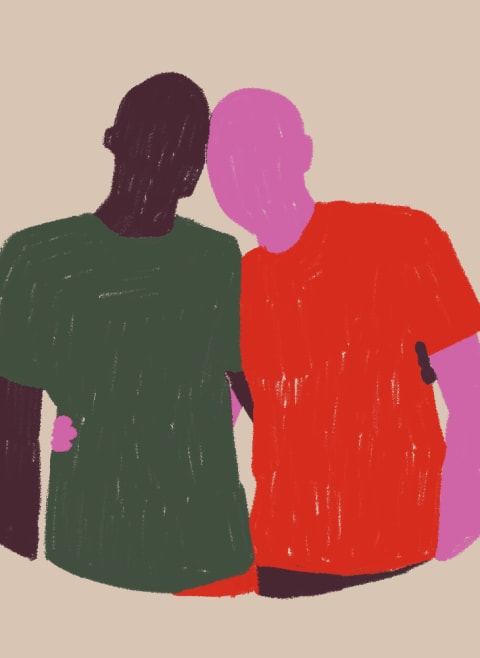
2. Friend hug
A friend hug is a traditional, two-armed hug where both people's chests are touching. "Typically, we move our pelvises away from each other, not closer to each other," Mattenson notes.
What it means: The distance between the two pelvises provides extra space so nothing is misconstrued to be sexual or romantic. Generally, these hugs are quick, unless you haven't seen each other for a long time, Mattenson adds.
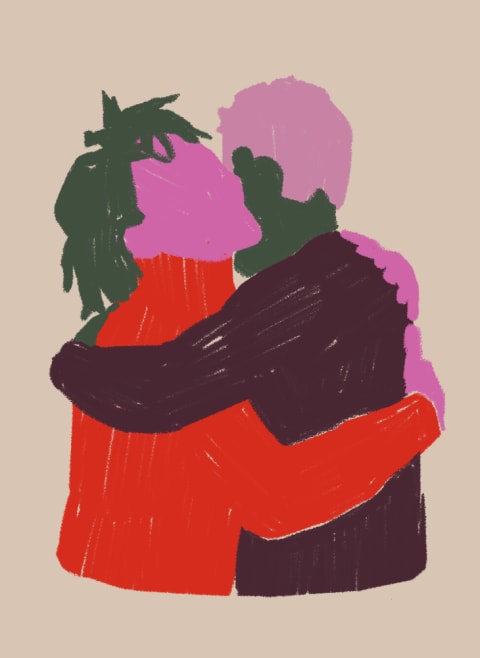
3. Hugging from behind
Depending on how this hug is executed, it could indicate a romantic relationship or a parent-child relationship. In a romantic setting, one person usually stands behind the other, with the hugger's front touching the other's backside closely, and wraps their arms around the partner's chest or torso. In a parent-child setting, the parent can squat down, wrap their arms around their child's chest from behind, and gently rock the child side to side or just hold them.
What it means: According to Mattenson, this pose is bonding for couples because they can stay physically close while looking at the same view. Generally, the taller person in the relationship will be behind (similar to spooning, a common cuddling position). To give the "big spoon" a chance to be the "little spoon," the shorter person can hug from behind.
It can also be a great hug for parents to give to children. "It gives them that extra support behind their back that's literally saying 'I've got your back,'" Mattenson says.
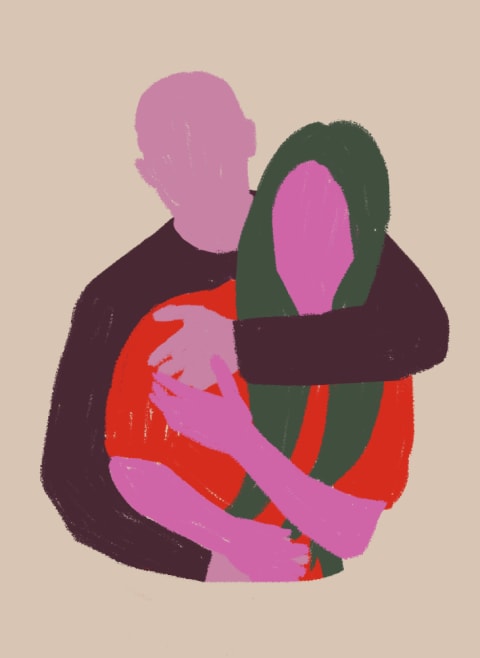
4. Hugging around the waist
With this type of hug, both partners' waists are completely aligned and their arms are wrapped around each other's waists. In this position, they can lean back and look at each other in the eyes.
What it means: This is an intimate romantic hug, which provides an opening for someone to make the next move. "They can take it into a more playful sexual realm, maybe start kissing or gazing into each other's eyes," Mattenson says.
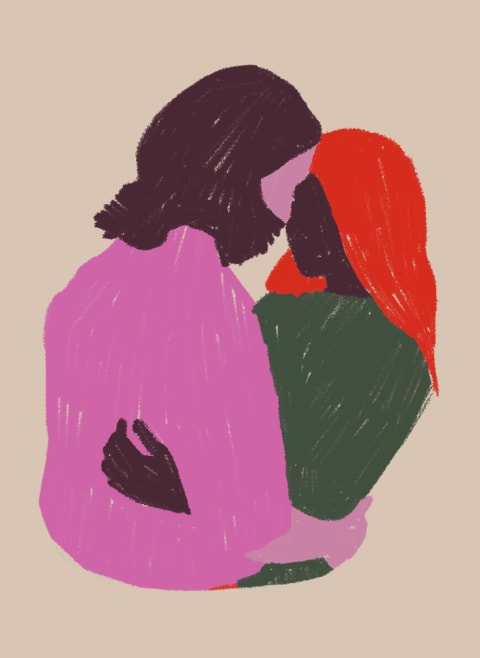
5. Bear hug, aka tight hug with a squeeze
Bear hugs are most commonly done standing up. It's like a normal hug but much closer, tighter, and usually more prolonged. Bear hugs can also be taken lying down, which Mattenson calls the "love blanket," with one person lying on top of the other.
What it means: According to Colker, the feeling of a bear hug is reminiscent of being in the womb, when we feel warm and secure. It also helps to activate the parasympathetic nervous system, which gets us out of a fight, flight, or freeze mode. "This type of hug is so satiating on a physical, human level," Mattenson says. Close friends, romantic partners, and family members can all appropriately engage in a bear hug.
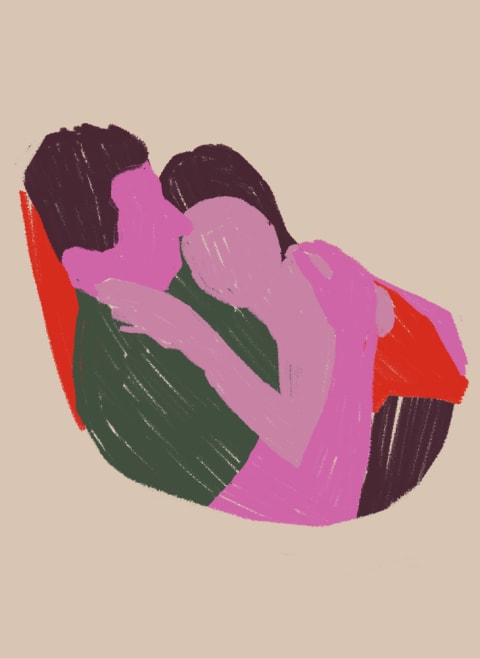
6. One-sided hug
In a one-sided hug, both people are facing each other. One is usually receiving the hug while the other is giving it. The receiver is typically limp with their arms by their side. The giver (or supporter) is squeezing the other one tightly.
What it means: Often thought of as a forced or unwanted hug, the one-sided hug may actually be emotionally supportive. "It's OK to crumble into your partner a little bit and have them support you when things are really challenging," Colker says. Overall, the one-sided hug is permission to just receive.
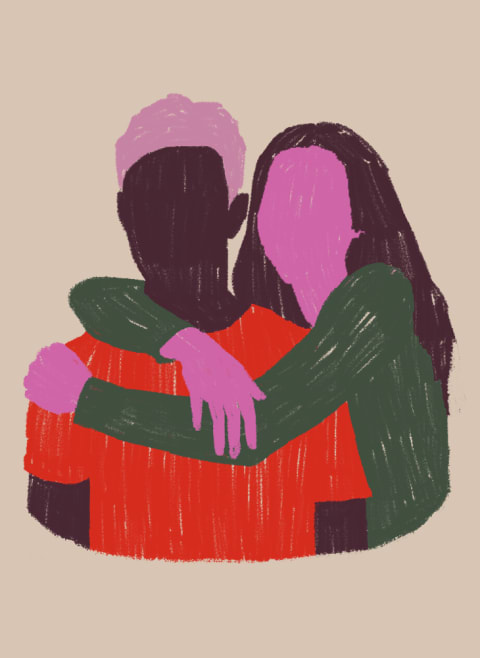
7. Heart-to-heart hug
In a heart to heart hug, both huggers approach the embrace with their left sides, so their hearts touch first. This can be done in a standing or seated position. When sitting, your arms and legs can be intertwined. Mattenson recommends holding it for three minutes or longer.
What it means: "Most people unintentionally hug starting from the right side because it's more protective and further away from the heart," Mattenson explains. "When you go in from the left side, it's intimate." This is a great hug for couples who want to become intimate together.
Heart-to-heart hugs are also beneficial for people who don't typically like hugging but want to appease a loved one who likes physical touch or has physical touch as a love language. "It's more nourishing for both of you, even if you don't really enjoy the physical touch aspect of it," Colker says.
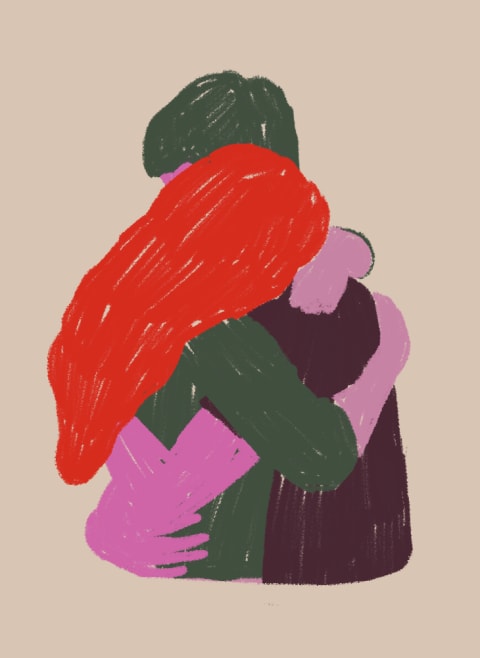
The health benefits of hugging
There are both physical and mental benefits of hugging. According to integrative neurologist and mindbodygreen Collective member Ilene Ruhoy, M.D., Ph.D., hugging promotes emotional closeness between two people through the exchange of energy.
"The act of hugging also releases oxytocin stored in the pituitary gland, which is often affectionately referred to as the 'love hormone' because it helps us bond with our newborns," Ruhoy explains. "That feeling of love, familiarity, and fellowship is why we have the instinct to hug our children, our parents, and our friends."
That release of oxytocin, along with serotonin, helps lower stress by de-escalating cortisol1 in the body. In this sense, hugging is an accessible and effective stress management tool.
Physically, studies have linked hugging to a decrease in physical pain and an improvement in cardiovascular health2. "Hugging is one of the most unintentionally comprehensive practices you can do," Mattenson says. "It's so easy, and it doesn't cost any money."
Summary
The takeaway
Hugging, even for those who aren't traditionally drawn to physical touch, leads to benefits in overall health and well-being. Depending on the type of relationship you're in, your comfort levels, and your intention, the right type of hug may vary.